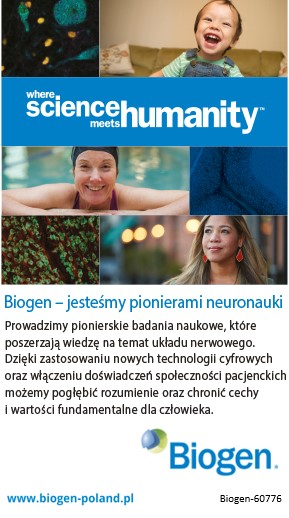Data with topical pravibismane for infected chronic diabetic foot ulcers in first-to-podium research at SAWC Spring/WHS
Microbion Phase 2 study shows favorable safety and early efficacy data, with 46.7% of patients treated achieving complete wound closure.
GRAPEVINE, TX, UNITED STATES, May 2, 2025 /EINPresswire.com/ -- A Microbion Corporation exploratory Phase 2a study shows encouraging results on the safety, tolerability, and efficacy of topical pravibismane in adults with moderately infected diabetic foot infections (DFIs).
Key Findings:
- Topical pravibismane (2.5mg/ml) was safe and well-tolerated over 12 weeks of treatment.
- 46.7% of patients treated with pravibismane plus standard of care (SoC) achieved complete wound closure compared with 31.3% in the SoC alone group—a 15.4% (1.5-fold) therapeutic improvement over SoC alone.
- In a subset of study subjects that did not receive systemic antibiotics as part of SoC, 52.6% of patients achieved complete wound closure with pravibismane as the sole pharmacologic intervention compared with 20.0% in the SoC alone group—a 32.6% (2.5-fold) therapeutic improvement over SoC alone.
The randomized, controlled trial was presented as First-To-Podium research at the 2025 Symposium on Advanced Wound Care (SAWC) Spring/Wound Healing Society (WHS) by Dr. Brett Baker, Founder and Chief Innovation Officer at Microbion. Microbion’s findings reinforce the growing interest in topical, biofilm-targeting therapies that offer broad-spectrum efficacy without systemic toxicity—an urgent need in the treatment of chronic diabetic wounds.
This groundbreaking study marks a step forward in the development of enhanced topical treatments for chronic, biofilm-associated wounds. Pravibismane is a first-in-class drug that offers broad-spectrum, anti-infective, anti-biofilm, and anti-inflammatory effects. With a novel mechanism of action, it disrupts microbial bioenergetics, which hinders the ability of microbes to replicate, maintain biofilms, and survive.
“As the first compound in a new drug class, pravibismane provides uniquely broad-spectrum biofilm eradication activity,” Baker said. “Pravibismane also exerts anti-inflammatory effects, which, considering the unresolving nature of inflammation in DFIs and DFUs, may be important in allowing these chronic wounds to heal.”
The study included 47 patients randomized 2:1 to receive either pravibismane plus standard of care (SoC) or SoC alone. SoC included an initial course of systemic antibiotics, sharp debridement, dressing changes and offloading. Pravibismane was applied topically three times per week for up to 12 weeks. At the end of treatment, 46.7% of patients in the pravibismane arm achieved complete wound closure compared to 31.3% in the SoC arm—a 15.4% (1.5-fold) therapeutic improvement favoring pravibismane. Median percent reduction in wound area was also greater in the pravibismane group (-98.5%) compared to SoC (-65.7%).
An unadjusted ad-hoc analysis of 29 subjects who did not receive systemic antibiotics as part of the SoC were also analyzed, providing an opportunity to assess the effect of pravibismane as the sole pharmacologic agent treating moderate DFI. In this population complete wound closure was achieved in 52.6% in the pravibismane group compared to 20% in the SoC group – a 32.6% (2.5-fold) therapeutic improvement favoring pravibismane. While the study was not powered for statistically significant efficacy, investigators observed consistent trends across several efficacy endpoints.
There were no drug-related adverse events due to pravibismane treatment. Pharmacokinetic data also showed no systemic absorption or accumulation of pravibismane or its metabolites. More information about the study can be found on Clinicaltrials.gov (identifier number: NCT05174806).
Unlike systemic antibiotics, which often disrupt the body’s natural microbiome and which can stress organs like the kidneys, pravibismane is administered directly to the wound site.
“Pravibismane does not compromise the normal flora in the rest of the body, nor exacerbate comorbidities that can be associated with systemic antibiotic use,” Dr. Baker said. “We believe that the multi-modal activity provided by topical pravibismane in a single, convenient-to-use agent that could reduce the use of systemic antibiotics while offering improved safety and treatment convenience; healthcare providers and patients do not need to switch therapeutic modalities or combine them.”
Looking ahead, Microbion plans to evaluate pravibismane’s role in reducing major complications of DFIs, such as limb loss.
“Preventing infection-related limb loss remains an unmet need in the field of advanced wound care,” Dr. Baker emphasized. “It is our hope, in registrational Phase 3 clinical studies, to demonstrate reduced rates of infection-related amputation with pravibismane, addressing this critically important unmet need.”
About diabetic foot ulcers:
Approximately one third of people with diabetes develop a foot ulcer during their lifetime. Annually 18.6 million people worldwide and 1.6 million in the US are affected, and about half of the ulcers become infected.1 Updated evidence-based guidelines emphasize the importance antimicrobials for prompt treatment to avoid more serious complications such as osteomyelitis and amputations.2
References:
1. Voelker R. What Are Diabetic Foot Ulcers? JAMA. 2023;330(23):2314. doi:10.1001/jama.2023.17291
2. Senneville et al. IWGDF/IDSA Guidelines on the diagnosis and treatment of diabetes-related foot infections (IWGDF/IDSA 2023). Diabetes Metab Res Rev. 2024 Mar;40(3): e3687. doi: 10.1002/dmrr.3687
About HMP Global
HMP Global is the omnichannel market leader in healthcare events, education, and insight — with a mission to improve patient care. For 40 years, the company has built trusted brands including Psych Congress, the premier source for mental health education, and the Symposium on Advanced Wound Care (SAWC), the largest wound care meeting in the world. HMP Global partners with leading experts around the world to deliver more than 450 annual events, medical strategy, and marketing for pharmaceutical and medical device customers through HMP Collective, and pharmaceutical market insight, engaging a global community of healthcare stakeholders that includes nearly 2 million clinicians across 600 medical specialties as well as managed care, behavioral health, senior living, emergency medical, and pharmaceutical commercialization professionals. For more information, follow HMP Global on LinkedIn or visit hmpglobal.com.
Sandi Beason, APR
HMP Global
pr|hmpglobal.com| |pr|hmpglobal.com
Visit us on social media:
LinkedIn
Facebook
Legal Disclaimer:
EIN Presswire provides this news content "as is" without warranty of any kind. We do not accept any responsibility or liability for the accuracy, content, images, videos, licenses, completeness, legality, or reliability of the information contained in this article. If you have any complaints or copyright issues related to this article, kindly contact the author above.
Final Days to Submit Abstracts for the 2025 Lysosomal Disease Summit in Sydney, Australia
SideBar Podcast Welcomes Civility Experts Cassandra Dahnke and Tomas Spath
Inside “Who Do You Think You Are?,” Marie Antonette Waite's Book Changing Lives
Kalendarium
Więcej ważnych informacji
 Jedynka Newserii
Jedynka Newserii

 Jedynka Newserii
Jedynka Newserii

Ochrona środowiska

Zielona transformacja wiąże się z dodatkowymi kosztami. Mimo to firmy traktują ją jako szansę dla siebie i Europy
Bez zaangażowania największych firm, które ograniczają własny ślad węglowy, będzie trudno o transformację energetyczną. Jak wynika z danych Europejskiego Banku Inwestycyjnego, w ubiegłym roku 61 proc. przedsiębiorstw z UE zainwestowało w walkę ze zmianą klimatu. Choć z tymi inwestycjami wiążą się zwykle ogromne koszty, część firm traktuje je jako szansę na podniesienie swojej konkurencyjności. Wśród znaczących korzyści podnoszą też kwestię zmniejszania zależności od dostaw surowców energetycznych z innych krajów.
Prawo
Rolnicy z Wielkopolski i Opolszczyzny protestują przeciwko likwidacji ich miejsc pracy. Minister rolnictwa deklaruje szukanie rozwiązań

W czwartek 24 kwietnia pracownicy towarowych gospodarstw rolnych z województw wielkopolskiego i opolskiego protestowali przed Ministerstwem Rolnictwa i Rozwoju Wsi w Warszawie. To już kolejny – po poznańskim – protest, który ma zwrócić uwagę na opieszałość urzędników w związku z zagospodarowaniem zwracanych do Zasobu Skarbu Państwa dzierżawionych gruntów, na których dziś prowadzona jest działalność rolnicza. Minister Czesław Siekierski przyjął delegację pracowników, która przekazała petycję z postulatami wymagającymi pilnych działań urzędniczych.
Prawo
W połowie maja pierwszym pakietem deregulacyjnym zajmie się Senat. Trwają prace nad drugim pakietem

Zgodnie z zaplanowanym porządkiem obrad na posiedzeniu 14–15 maja Senat zajmie się pierwszym pakietem deregulacyjnym, przygotowanym przez Ministerstwo Rozwoju i Technologii. Przyjęty w ubiegłym tygodniu przez Sejm dokument zawiera około 40 rozwiązań, które mają ułatwić prowadzenie biznesu. W ciągu kilku miesięcy efekty mają być odczuwalne dla przedsiębiorców. Jednocześnie trwają już prace nad kolejnymi propozycjami deregulacyjnymi.
Partner serwisu
Szkolenia

Akademia Newserii
Akademia Newserii to projekt, w ramach którego najlepsi polscy dziennikarze biznesowi, giełdowi oraz lifestylowi, a także szkoleniowcy z wieloletnim doświadczeniem dzielą się swoją wiedzą nt. pracy z mediami.




![Europejskie miasta planują wzrost inwestycji w infrastrukturę społeczną. Wydatki na niskoemisyjny transport wciąż są niewystarczające [DEPESZA]](https://www.newseria.pl/files/1097841585/panel-dotacje-foto,w_85,_small.jpg)



.gif)

 |
| |
| |
|